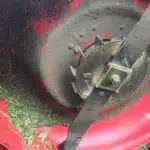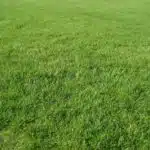Maintaining a well-manicured lawn is essential for enhancing the aesthetic appeal of any property. A neatly trimmed lawn not only adds to the visual appeal of a landscape, but it also helps create a conducive environment for outdoor activities. However, one of the most common questions that homeowners ask themselves is how often they should mow their lawns.
The answer to this question depends on several factors, including the type of grass, weather conditions, soil type, and personal preferences. As a lawn care professional, it is essential to understand these factors and provide your clients with informed advice on how best to maintain their lawns. In this article, we explore some of the key considerations that homeowners should keep in mind when deciding how often to mow their lawns.
Types Of Grass And Their Growth Patterns
Grass species selection is crucial in determining the frequency of lawn mowing and the seasonal variations that affect growth patterns. Some grass species grow faster than others, requiring more frequent mowing while others grow slower, meaning less frequent mowing is required. For instance, Bermuda grass grows fast and requires a weekly mow during summer months but may only need to be cut one or two times throughout winter. In contrast, Zoysia grass grows slower and requires less frequent mowing throughout the year.
Lawn mowing frequency varies depending on weather conditions and seasons. During spring and summer months when grass growth is at its peak, lawns should be mowed once per week to maintain appropriate height. During colder months such as fall and winter, it may only be necessary to mow every 2-3 weeks as growth slows down considerably.
Seasonal changes in temperature also impact grass growth patterns. As temperatures rise towards summer months, grass grows faster and thicker resulting in more frequent mowing. Conversely, during cooler seasons such as autumn or winter, grass grows slower due to lower temperatures resulting in less frequent lawn maintenance being required.
As weather conditions play a significant role in determining the growth pattern of your lawn, it is essential to monitor seasonal changes closely for optimal lawn care management. Understanding how different types of grasses grow and their associated maintenance requirements will help you keep your lawn healthy all year round despite changes in weather patterns. In the next section we will discuss how various weather conditions can affect your lawn’s growth patterns.
Weather Conditions And Their Impact On Lawn Growth
After discussing the types of grass and their growth patterns, it is important to consider the impact that weather conditions can have on lawn growth. As a lawn care professional, I understand that maintaining a healthy lawn requires a keen understanding of how environmental factors affect its growth.
Drought conditions can significantly impact lawn growth, as grass needs adequate moisture to thrive. During times of drought, grass may become brown or even die if not watered properly. It is important to monitor rainfall levels and supplement with watering as needed to ensure your lawn remains healthy.
Excessive rainfall can also pose problems for lawn maintenance. Heavy rain can cause soil compaction and lead to fungal diseases such as root rot. Additionally, excessively wet soil can inhibit root growth and make it more difficult for nutrients to reach the grass.
- To maintain optimal lawn health during periods of drought, consider investing in a sprinkler system or using a soaker hose.
- If your area experiences heavy rainfall frequently, consider aerating your lawn regularly to prevent soil compaction.
- Applying fungicides as needed can help prevent fungal diseases from taking hold in excessively wet conditions.
- Consider planting grass varieties that are better adapted to handle extreme weather conditions.
In order to maintain a healthy and vibrant lawn, it is crucial to understand how environmental factors such as drought and excessive rainfall can affect its growth. By taking steps such as proper watering techniques and selecting appropriate grass varieties, you can keep your lawn looking its best even in challenging weather conditions. In the next section, we will discuss soil type and nutrient requirements for maintaining optimal lawn health.
Soil Type And Nutrient Requirements
Nutrient management is an essential aspect of maintaining a healthy lawn. The soil type and nutrient requirements vary depending on the location of your lawn. Soil testing is a crucial step that helps to determine the appropriate fertilizer to use for optimal growth.
Different types of soils require different levels of nutrients, and it’s essential to understand the nutrient requirement of your lawn’s soil type. For instance, sandy soils tend to lose nutrients quickly, whereas clay soils retain nutrients longer. Therefore, it’s vital to use the right type of fertilizer for your lawn.
Soil testing enables you to know the specific nutrient deficiencies in your soil, allowing you to tailor your fertilization program accordingly. Soil tests will also help you avoid over-fertilization, which can lead to environmental pollution and damage to plants’ roots. Regular soil testing is necessary as it provides critical information needed for proper nutrient management.
Optimal lawn care requires more than just mowing regularly; it involves a comprehensive approach that includes understanding soil types and their nutrient requirements. Nutrient management is an essential aspect that should not be overlooked when taking care of your lawn. In the next section, we’ll discuss personal preferences and aesthetic considerations when mowing your lawn.
Personal Preferences And Aesthetic Considerations
As the saying goes, “beauty is in the eye of the beholder.” This holds true for lawn aesthetics as well. The appearance of a lawn can be a point of pride or a source of embarrassment for homeowners. Thus, personal preferences play a significant role in determining how often one should mow their lawn.
Some individuals prefer a perfectly manicured lawn with short, even blades of grass. Others may prefer a more natural look with longer grass and occasional patches of wildflowers. When it comes to lawn aesthetics, there is no right or wrong answer. Ultimately, it comes down to individual taste and what one finds visually appealing.
In addition to personal preferences, factors such as climate and soil conditions can also impact the appearance of a lawn. For example, areas with more moisture may require more frequent mowing to maintain desired aesthetics. Alternatively, some individuals may choose to let their grass grow longer during dry periods to prevent damage to the roots.
- Bullet point list:
- A well-manicured lawn can increase curb appeal and home value.
- Unkempt lawns can create an eyesore and lead to complaints from neighbors.
- Lawn aesthetics can vary based on geographic location and cultural norms.
- Factors such as climate and soil conditions should be taken into consideration when determining mowing frequency.
Understanding personal preferences and aesthetic considerations are crucial in determining how often one should mow their lawn. However, it is equally important to consider the type of grass in your lawn as this will directly impact its growth rate. In the subsequent section about ‘frequency of mowing for different grass types,’ we will delve deeper into this topic and provide guidance on how often you should be mowing based on your specific type of grass.
Frequency Of Mowing For Different Grass Types
Optimal frequency of mowing your lawn depends on the type of grass that you have. For instance, warm-season grasses, such as Bermuda and Zoysia, grow at a faster rate than cool-season grasses like Fescue and Kentucky Bluegrass. This means that they need to be mowed more frequently. Ideally, warm-season grasses should be mowed once every five days during the growing season while cool-season grasses require only one or two mowings per week.
Another factor that determines how often you should mow is the height of your grass. The optimal length for most types of lawn is between 2 to 3 inches. When your lawn exceeds this height, it will start to look unkempt, and it could also lead to disease and pest problems. Mowing your lawn too short can also damage the roots and make it more susceptible to drought stress. Thus, it is crucial to adhere to the recommended optimal frequency of mowing without going too low.
In summary, knowing when to mow your lawn can be challenging but following these guidelines will help you keep your lawn healthy and beautiful all year round. By understanding how often you should cut your grass depending on its type and keeping an eye on its height, you can ensure that it stays healthy throughout the year. In turn, this will reduce the amount of work required for regular maintenance while also improving the overall appearance of your garden area. Next up are some benefits of regular lawn maintenance that highlight why this routine is essential for maintaining a healthy green space in front of your home or business premise.
Benefits Of Regular Lawn Maintenance
Regular maintenance of your lawn is essential for its health and beauty. It not only enhances the aesthetic appeal but also provides a range of benefits that contribute to the overall well-being of your yard. One significant benefit of regular lawn care is that it promotes healthy grass growth by allowing proper airflow, sunlight, and nutrients to reach the soil. This results in a lush green lawn that is resistant to weed infestation and disease.
Frequency plays an important role in maintaining a healthy lawn. Mowing your lawn frequently ensures that the grass remains at an appropriate height, which facilitates photosynthesis and maintains root development. The frequency of mowing depends on several factors such as grass type, season, weather conditions, and soil moisture level. Generally, mowing once or twice a week during peak growing season is recommended.
Another benefit of regular lawn maintenance is that it helps prevent potential hazards like tripping over uneven terrain or stepping on sharp objects hidden in tall grass. Additionally, maintaining a well-trimmed yard enhances curb appeal, which can increase property value and attract potential buyers if you plan to sell your home in the future.
In summary, regular lawn maintenance has numerous benefits ranging from promoting healthy grass growth to enhancing property value. Proper frequency is crucial in ensuring optimal results for your yard’s health and appearance. In the subsequent section, we will discuss common mistakes to avoid when mowing your lawn to ensure you get the most out of your efforts.
Common Mistakes To Avoid When Mowing
Maintaining a healthy lawn requires more than just mowing it regularly. It also involves avoiding some common mistakes that can damage your lawn and affect its overall health. Here are some tips for maintaining a healthy lawn without excessive mowing:
First, avoid mowing the lawn too short. Cutting the grass blades too low can lead to scalping, which exposes the soil and makes it more susceptible to weeds and diseases. Additionally, cutting your grass too short can cause stress, reducing its ability to absorb water and nutrients from the soil.
Second, avoid mowing when the grass is wet. Mowing wet grass can cause clumping and clogging of your mower’s blades, leading to uneven cuts and compromising its performance. Wet grass is also more prone to disease transmission, causing further damage to your lawn.
Third, avoid using dull blades when mowing. Dull blades tear rather than cut the grass blades cleanly, leaving ragged edges that can make your lawn look untidy and promote disease development. To ensure a clean cut every time you mow, sharpen your mower’s blades at least once a year or whenever they become dull.
- Fourthly, don’t forget to alternate mowing patterns. Mowing in only one direction repeatedly can result in compacted soil and uneven growth patterns.
- Fifthly, refrain from over-fertilizing your lawn as this could lead to excessive growth that may require frequent mowing.
By avoiding these common mistakes when mowing your lawn, you will be able to maintain healthy turf while keeping it aesthetically appealing at all times.
To achieve this goal effectively requires choosing the right equipment for your needs – specifically selecting an appropriate lawnmower for your landscaping goals – which we will discuss in detail in our next section about selecting the right lawnmower for you.
Choosing The Right Lawn Mower For Your Needs
When it comes to maintaining your lawn, choosing the right lawn mower can make a significant difference in the efficiency of your lawn care routine. Factors such as lawn size, terrain, and desired cut height are all important considerations when selecting a lawn mower. Additionally, proper maintenance is essential for ensuring that your mower operates at peak efficiency.
One key factor to consider when choosing a lawn mower is the size of your yard. If you have a small yard, a push reel or electric mower may be sufficient. For larger yards or more challenging terrain, a gas-powered riding mower may be necessary. It’s also important to consider the type of grass you have and its growth habits when selecting a mower.
Once you’ve selected the right lawn mower for your needs, it’s important to keep it properly maintained to ensure optimal performance. Regular maintenance includes oil changes, air filter replacements, blade sharpening, and fuel system cleaning. Neglecting maintenance tasks can lead to decreased efficiency and costly repairs down the line.
| Lawn Mower Type | Pros | Cons |
|---|---|---|
| Electric | Quiet operation; No emissions; Low maintenance | Limited range due to cord length; Less powerful than gas mowers |
| Gas-Powered | More powerful than electric mowers; Wider range of cutting heights and deck sizes | Louder operation; Requires regular maintenance |
| Riding Mower | Ideal for large lawns with hilly terrain; Can tow attachments like carts or spreaders | Expensive initial investment; Requires storage space |
Properly selecting and maintaining your lawn mower is essential for keeping your lawn looking its best. In addition to choosing the right equipment, proper mowing techniques are also critical for maintaining healthy grass. In the next section, we’ll cover some best practices for achieving a lush, vibrant lawn through effective mowing techniques.
Proper Mowing Techniques For A Healthy Lawn
Proper mowing techniques for a healthy lawn are essential to maintain the beauty and health of your lawn. It is important to mow your lawn frequently to keep the grass at an ideal height, which will promote healthy growth and prevent weed infestation. The frequency of mowing depends on several factors such as grass type, weather conditions, and soil quality. However, in general, it is recommended to mow your lawn at least once a week during the growing season.
Lawn watering tips are also crucial for maintaining the health of your lawn. Watering your lawn deeply but infrequently is more effective than frequent light watering. This encourages deeper root growth, making the grass more drought-resistant and less susceptible to diseases. Additionally, watering early in the morning or late in the evening can reduce water loss due to evaporation.
Choosing the right lawn mower is another important factor in proper mowing techniques for a healthy lawn. A mower with sharp blades will provide a clean cut that is less damaging to the grass blades. Additionally, choosing a mower with adjustable height settings will allow you to customize your cutting height according to your grass type and growing conditions.
Transition: Now that we have covered some basic techniques for proper mowing, let’s move on to how adjusting mower height can affect different types of grasses.
How To Adjust Mower Height For Different Grass Types
The grass in your lawn may be as diverse as the people who walk on it. From the common Bermuda grass to the fescue, each type of grass requires different mowing frequency and height adjustments. The frequency of lawn mowing is determined by how fast your grass grows. Mowing too often or not enough will harm your lawn’s health and overall appearance.
It is essential to adjust your mower height to suit the type of grass you have in your lawn. A general rule of thumb is to cut no more than one-third of the height off each time you mow. This helps prevent over-exposure of the soil, which can lead to weed growth and drying out of the soil. For example, if you have a Bermuda grass lawn, set your mower blades between 1/2 inch to 1 inch high, while a fescue lawn needs a higher setting between 2 inches to 3 inches.
Incorporating these simple steps into your mowing routine can help protect and maintain a healthy lawn for years to come. Adjusting mower height for different types of grass is an essential aspect of proper lawn care that ensures optimal health and appearance. In addition, understanding how often you should mow your lawn can significantly affect its overall health and appearance. Next up, we will discuss mulching and grass recycling benefits that go beyond just keeping your yard looking great.
Benefits Of Mulching And Grass Recycling
Mulching and grass recycling is an effective technique that enhances lawn care. Mulching refers to the process of leaving grass clippings on the lawn after mowing, while grass recycling involves using a mower with a specific cutting blade that chops up the clippings and disperses them back onto the lawn.
The benefits of mulching and grass recycling are numerous. Firstly, it has a positive environmental impact by reducing waste in landfills. Instead of bagging up yard waste for disposal, which can be harmful to the environment, mulching enables you to recycle natural materials back into your lawn. Secondly, it leads to cost savings by eliminating the need for fertilizers as mulched grass clippings serve as a natural fertilizer for your lawn.
Additionally, mulching and grass recycling help in soil conservation through nitrogen restoration. The decomposing clippings return essential nutrients such as nitrogen back into the soil instead of being thrown away in bags. Finally, this practice ensures that your lawn remains healthy and lush throughout the year.
- Mulching reduces waste in landfills
- Cost savings due to elimination of fertilizers
- Soil conservation through nitrogen restoration
- Keeps your lawn healthy and lush , promoting the growth of vibrant flowers and plants while also preventing weed growth.
Importance Of Sharp Mower Blades
Mulching and grass recycling are excellent practices that promote healthy lawns. However, the benefits of these practices can be compromised if the mower blades are not sharp enough. The frequency at which you sharpen your mower blades is crucial to ensuring a neat and healthy lawn.
Sharpening frequency depends on how often you use your mower and the type of terrain you mow. A professional lawn care service provider may recommend sharpening after every 10 hours of use or every month, whichever comes first. However, if you do not use your mower as frequently or have a small lawn, DIY blade sharpening could suffice. If you opt for DIY sharpening, ensure that you follow the manufacturer’s instructions carefully.
It is essential to note that dull blades can damage your lawn by causing ragged cuts on grass blades. Ragged cuts on grass make it more susceptible to diseases and pests. Additionally, dull blades cause uneven cuts that result in an unkempt appearance of the lawn. Therefore, regardless of whether you opt for DIY or professional sharpening services, ensure that your mower blades are sharp enough to maintain a beautiful and healthy lawn.
As a professional in the lawn care industry, I cannot overemphasize the importance of maintaining sharp mower blades when mowing your lawn. Sharpening frequency is crucial for achieving optimal results without damaging the health and appearance of the turfgrass. In the next section, we will discuss signs that indicate your lawn needs mowing and how often it should be done to achieve optimal results consistently.
Signs That Your Lawn Needs Mowing
One of the most important aspects of maintaining a healthy and beautiful lawn is knowing when to mow it. Overgrown turf not only looks unsightly, but it can also lead to a number of problems such as increased weed growth and insect infestations. To ensure that your lawn stays healthy and vibrant, it’s essential to keep an eye out for signs that your grass needs to be cut.
One of the most obvious signs that your lawn needs mowing is uneven grass height. If you notice that some areas of your lawn are significantly taller than others, it’s time to break out the mower. Uneven grass height can be caused by a variety of factors, including uneven sun exposure or poor soil quality. Whatever the cause may be, regular mowing will help keep your lawn looking its best.
Another sign that your lawn needs attention is if you see clumps of grass or debris scattered throughout the yard. These clumps can indicate that your grass is too long and has started to mat down, preventing proper airflow and sunlight from reaching the soil. Mowing frequently will help prevent this problem from occurring in the first place and will keep your lawn looking neat and tidy.
Next up: dealing with lawn diseases and pests…
Dealing With Lawn Diseases And Pests
After identifying the signs that your lawn needs mowing, it is important to consider preventive measures to avoid lawn diseases and pests. One example is to ensure proper watering and drainage to prevent waterlogging, which can lead to fungal diseases. Additionally, regular fertilization can strengthen the grass and make it more resistant to pests.
If your lawn does fall victim to disease or pest infestation, there are several treatment options available. Lawn care products such as pesticides and fungicides can be effective but should be used with caution as they may harm beneficial insects and microorganisms in the soil. Organic solutions for lawn disease and pest control include using natural predators like ladybugs or introducing beneficial microbes into the soil.
When dealing with lawn diseases and pests, it is crucial to take a proactive approach by following preventative measures rather than relying on treatment options alone. However, if you do need to use treatments, consider using organic solutions first before resorting to synthetic chemicals. By taking care of your lawn in this way, you can help maintain its health and beauty for years to come.
Transitioning into outsourcing lawn maintenance services, there are numerous benefits that homeowners can enjoy.
Outsourcing Lawn Maintenance Services
Proper lawn maintenance requires time, effort, and resources. As a homeowner, you may be wondering whether it’s more cost-effective to outsource lawn maintenance services or do it yourself (DIY). While DIY lawn care may seem like a more affordable option, there are several factors to consider when making this decision.
One of the most important factors to consider is lawn care costs. DIY lawn care involves purchasing equipment such as a lawnmower, fertilizer spreader, and trimmer. These costs can add up quickly and become expensive in the long run. On the other hand, outsourcing lawn maintenance services allows you to pay a fixed fee for regular lawn care without having to worry about purchasing and maintaining equipment.
Another factor to consider is the amount of time and effort required for proper lawn maintenance. Maintaining a healthy and lush green lawn requires consistent mowing, watering, fertilizing, and trimming. Outsourcing these tasks frees up your time for other activities while ensuring that your lawn stays healthy and attractive all year round.
In conclusion, outsourcing lawn maintenance services may seem like an unnecessary expense at first glance but can ultimately save you time, money, and effort in the long run. By hiring professionals to maintain your yard regularly, you can rest assured that your property will look its best all year round without having to invest in expensive equipment or spend countless hours doing yard work yourself.
Conclusion
Maintaining a healthy lawn requires more than just watering and fertilizing. Mowing your lawn is an essential part of lawn care that should not be overlooked. The frequency of mowing your lawn depends on various factors such as grass type, weather conditions, soil type, and personal preferences.
Different types of grass have varied growth patterns, which determine how often you should mow your lawn. Warm-season grasses such as Bermuda and Zoysia require frequent mowing during the growing season compared to cool-season grasses like Fescue and Kentucky bluegrass. Weather conditions also play a crucial role in determining how often you should mow your lawn. During wet seasons, grass tends to grow faster, necessitating frequent mowing.
Soil type and nutrient requirements also affect the frequency of mowing. A well-nourished lawn grows faster and may require more frequent mowing than a poorly maintained one. Personal preferences and aesthetic considerations are the final factors that determine how often you should mow your lawn.
Statistics show that a quarter-inch of grass growth per day is typical for most types of lawns during peak growing seasons. This means that if you let your grass grow unchecked for two weeks, it would have grown by approximately two inches! Regularly maintaining your lawn can help prevent overgrowth, which can lead to pest infestation or diseases.
As professionals in the field of lawn care, we recommend that you hire experienced technicians who understand the intricacies involved in maintaining a healthy-looking yard. With our services, we guarantee timely maintenance schedules that will keep your lawn looking neat all year round!
Image Credits
- “Mow Cop Castle” by cattan2011 (featured)





























